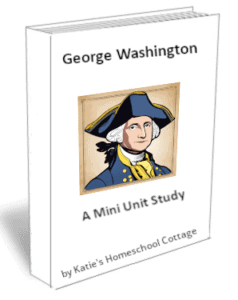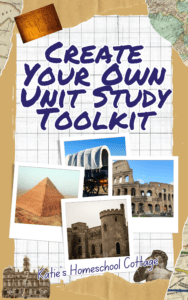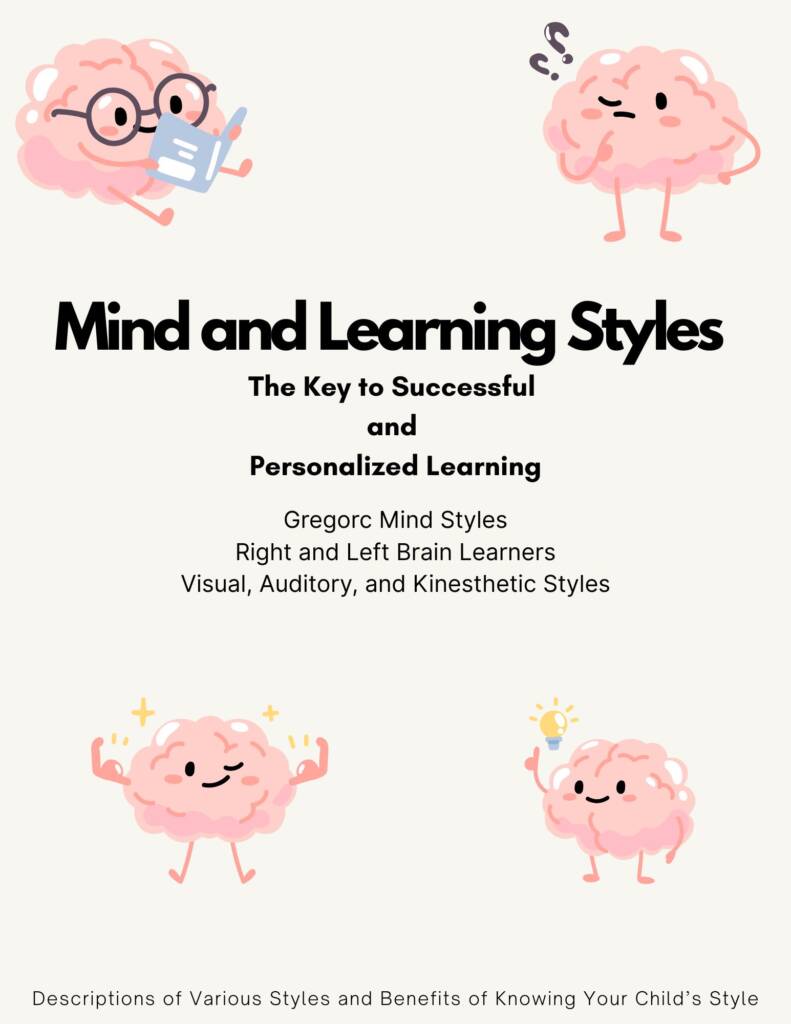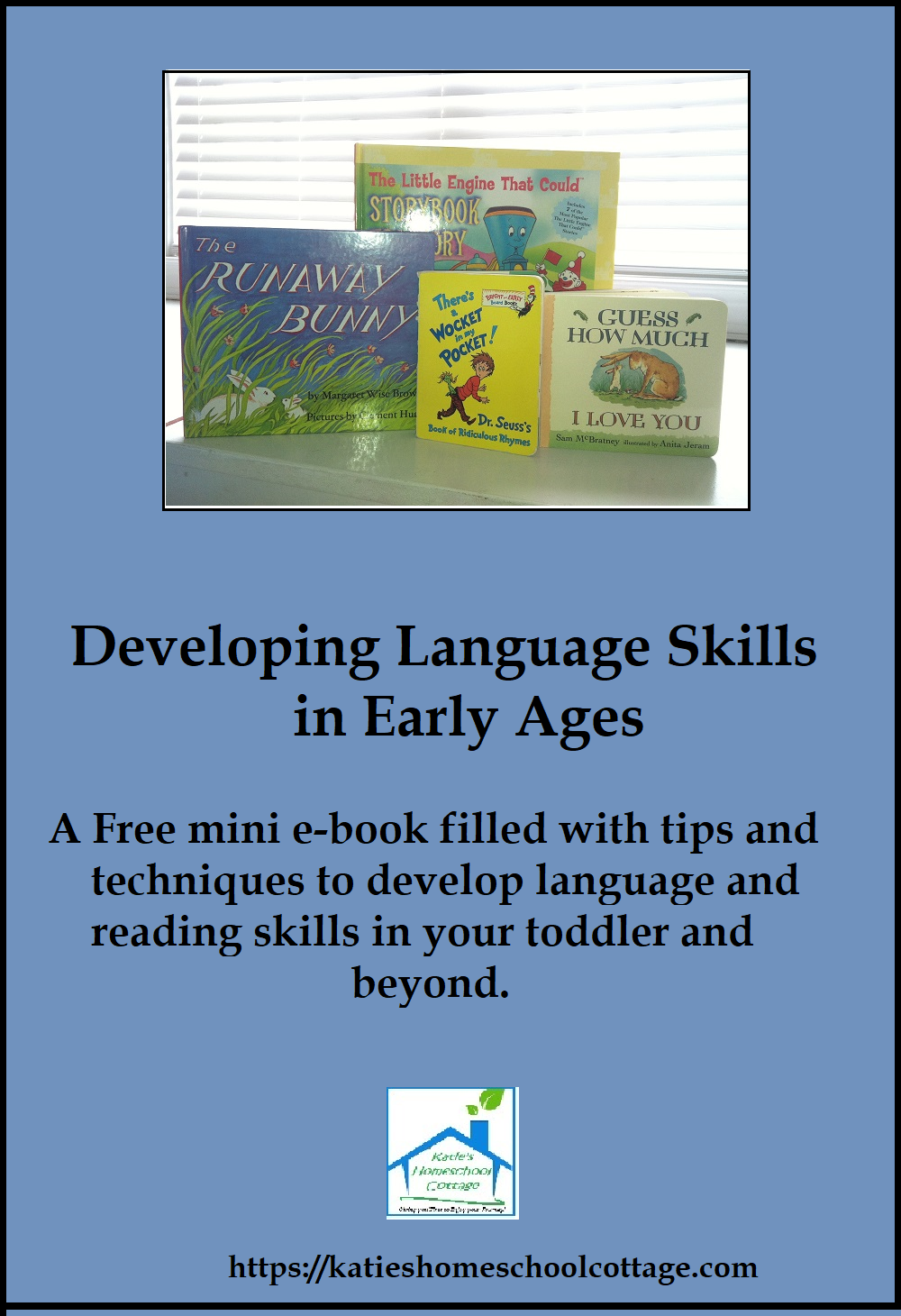This post about the Unit Studies Homeschool Method is the eighth post in a 10 part series about different homeschooling methods.
This series includes the following homeschooling methods:
- Classical Homeschool
- Charlotte Mason
- Montessori
- Unschooling
- Traditional or School at Home
- Project Based Learning
- Eclectic or Mixed Approach
- Unit Studies or Thematic
- Delight Directed or Interest Led Learning
- Waldorf
Thematic or Unit Studies: A Fun and Integrated Way to Homeschool Your Kids
Are you looking for a homeschooling approach that ties all subjects together, sparks curiosity, and makes learning feel like an exciting adventure?
If so, the Unit Studies Homeschool method might be the perfect fit for your family.
In this post, we’ll explore what thematic or unit studies are, why they’re such a powerful way to learn, how to create them at home, tips to make this method a joyful, effective experience for your homeschool, and why it might be the perfect fit for your family and your child’s learning style.
What is the Unit Studies Homeschool Method?
At its core, Thematic or Unit Studies is a homeschooling approach where you center your learning around a specific theme, topic, or concept.
Rather than teaching each subject separately, the theme weaves through multiple subjects—math, science, history, art, language arts, and more.
For example, if your unit theme is “Space”, you might:
- Learn the science of planets and stars
- Explore the history of space exploration
- Practice math by calculating distances in space or creating scale models
- Read literature about astronauts or science fiction
- Create art projects like model rockets or star maps
- Write reports or stories inspired by the theme
This integrated approach helps children make connections between subjects, deepens understanding, and keeps learning fresh and exciting.
Our family loved the unit study homeschool method! We built ours on a combination of a historical time period with literature written during that time period or about that period.
On top of that, we would learn generally about the period and then choose areas of specific interest to my kids. From there, we would choose “how” did they want to learn about those specific topics with books, movies, projects, field trips, crafts and other activities.
One such study was the Middle Ages, where we started with books and went from there, culminating in a Medieval feast that we all cooked together. (We also had a Grecian feast where making homemade pita bread, spanakopita, and baklava was a big hit!)
I’ve created a free sample unit study about George Washington to give you an idea of what a unit study can include to get you started!

Why Choose the Unit Studies Homeschool Method for Your Family?
1. Integrated Learning Creates Deeper Understanding
When kids study a topic from multiple angles, they engage more senses and ways of thinking. It helps them see how subjects interconnect in real life, rather than isolated facts. This deep, layered understanding improves retention and sparks curiosity.
2. Keeps Kids Engaged and Motivated
Themes like “Dinosaurs,” “Oceans,” “Ancient Civilizations,” or “Inventors” naturally pique children’s interest. When kids are excited about the subject, they’re more likely to dive in enthusiastically across subjects.
3. Flexible and Adaptable to Any Age or Skill Level
Unit studies can be scaled up or down to fit preschoolers through high schoolers. You can choose books, projects, and activities appropriate for your child’s developmental level and interests.
4. Allows for Hands-On and Experiential Learning
Themes encourage creative projects, experiments, field trips, and real-world experiences that go beyond worksheets. Kids learn by doing, which is a powerful way to solidify knowledge.
5. Simplifies Planning for Parents
Rather than planning separate lessons for each subject, you organize around one cohesive topic, making lesson planning feel more manageable and meaningful.
How to Plan using the Unit Studies Homeschool Method
To help you in planning your own unit study, I’ve created a free Create Your Own Unit Study Toolkit, which has brainstorming and organization worksheets to get you started with writing down your ideas about a unit study topic you want to explore.
There are also examples of a unit study for Ancient Greece that my family completed for you to use with your family!

Step 1: Choose Your Theme
Start with topics your child is naturally curious about or that connect to your homeschool goals. Popular themes include:
- Space and Astronomy
- Animals and Habitats
- Ancient Egypt or Other Civilizations
- Weather and Seasons
- Famous Inventors or Explorers
- Art Movements or Music Genres
Don’t hesitate to pick something seasonal or tied to a holiday or family interest.
Step 2: Define Your Learning Goals
Decide what skills and knowledge you want to cover within the theme. This might include:
- Key facts or concepts (e.g., phases of the moon)
- Subject areas to cover (science, history, math, language arts)
- Projects or hands-on activities to complete
- Field trips or videos to watch
Having clear goals keeps your unit focused and productive.
Step 3: Gather Resources and Materials
Collect books, videos, worksheets, craft supplies, science kits, and online resources related to your theme. Libraries and free internet resources are great starting points.
For example, for a “Dinosaurs” unit, you might gather:
- Children’s dinosaur books and encyclopedias
- Fossil digging kits or dinosaur models
- Videos about paleontology
- Math worksheets with dinosaur counting or measuring
- Writing prompts about dinosaur adventures
Step 4: Create a Flexible Schedule or Plan
Decide how long your unit will last. It might be a week, a month, or longer depending on your child’s interest and your homeschool rhythm.
Organize your activities and lessons around your timeline, leaving room for spontaneous exploration and fun.
Step 5: Teach and Explore Together
Dive into the theme with your child! Read books aloud, watch videos, conduct experiments, take nature walks, and do projects. Encourage questions and curiosity.
Mix hands-on activities with reading, writing, and discussion. Use the theme as a jumping-off point for creative expression and critical thinking.
Benefits of The Unit Studies Homeschool Method for Families
Builds Connections Across Subjects: Helps children see learning as interconnected, just like in the real world.
Increases Motivation and Enjoyment: Themes are naturally engaging and fun.
Supports Different Learning Styles: Combines reading, hands-on projects, visual aids, and movement.
Easily Adaptable: Works well for multiple children or different ages at once.
Encourages Family Learning: Great for group discussions and collaborative projects.
Tips for Making Thematic or Unit Studies Successful
- 1. Follow Your Child’s Lead
If your child wants to spend more time on a particular subtopic, let them! Flexibility is one of the best parts of this method. - 2. Balance Structure and Freedom
Plan enough to keep the unit focused, but leave space for exploration, questions, and spontaneous activities. - 3. Incorporate Multiple Learning Modalities
Include reading, writing, discussion, art, music, movement, and hands-on experiments to engage the whole child. - 4. Use Real-Life Experiences
Visit museums, aquariums, parks, or historical sites related to your theme. Even a simple nature walk can deepen learning. - 5. Document Learning
Keep a journal, scrapbook, or portfolio of your child’s work and projects. This creates a meaningful record and helps track progress.
Is the Unit Studies Homeschool Method Right for Your Family?
Unit Studies or homeschooling is a fantastic choice for families who:
- Value flexibility over rigid structure
- Want to customize learning to their child’s strengths and interests
- Enjoy mixing hands-on activities with traditional academics
- Are comfortable with exploration and adjustment
- Prefer to be active participants in designing their child’s education
If these describe your family’s style and values, the unit study home school method can be deeply rewarding and effective.
Here is a resource I created to assist you in determining your child’s learning and thinking styles with assessments and descriptions and which homeschool method and curriculum is the right for one for them. You will find descriptions of various learning and thinking styles, assessments to determine your child’s styles, suggested teaching methods, materials, and curriculum with links for you to consider that match your child’s styles.

Frequently Asked Questions
Do unit studies cover all required subjects?
Yes, they can—but you’ll need to be intentional. Most unit studies naturally include reading, writing, science, history, and art. Math may need to be supplemented separately unless you creatively tie it into the theme. Many families use a core math curriculum alongside their unit studies.
How long does a unit study last?
It depends on the topic and your family’s pace. Some unit studies last a week or two; others might extend over a month or more. You’re in control of the timeline and depth.
Can I use unit studies with multiple children of different ages?
Start by identifying your child’s learning style, interests, and your family’s values. Then research various curricula and resources—online, print, project-based, or experiential—and choose what aligns best. You don’t have to commit to a full boxed set.
Do I need a set curriculum, or can I pull from multiple sources?
You can absolutely pull from multiple sources. Many eclectic homeschoolers combine textbooks, unit studies, online classes, living books, hands-on projects, and field trips.
What ages or grades are unit studies best for?
Unit studies are very flexible and can be adapted for preschool through high school. They’re especially popular in elementary and middle school but can be used for older students with more depth and independent research.
How do I document learning or create a transcript if I use unit studies?
You can record the subjects covered, reading lists, writing samples, projects, and assessments. For high schoolers, you can assign credit hours based on time spent and learning objectives achieved. Portfolios are also a great way to showcase learning.
Will my child be prepared for standardized tests or college if we use unit studies?
Yes, with thoughtful planning. Many families pair unit studies with structured resources (especially for math and language arts) to ensure academic readiness. For high school, integrating college prep materials or test prep can help fill any gaps.
Final Thoughts
The Unit Studies homeschool method brings learning to life by weaving together multiple subjects around a central idea your child loves. This method is perfect for homeschool families who want to inspire curiosity, deepen understanding, and have fun learning together.
By integrating reading, science, math, art, and history through themes, you create a rich, engaging learning environment where education feels like an exciting journey rather than isolated lessons.
Ready to give thematic unit studies a try?
Start with a theme your child is passionate about, gather resources, and dive in! You might just discover that learning this way is one of the most rewarding homeschool adventures you and your child share.






